Programmatic advertising refers to the automated buying and selling of digital advertising space in real-time using sophisticated algorithms. It allows advertisers to target their audience more precisely and efficiently, resulting in higher ROI and increased advertising effectiveness. Programmatic advertising has revolutionized the digital advertising industry by replacing traditional manual ad-buying processes with automated technology-driven solutions.

In traditional advertising, advertisers had to negotiate and manually buy ad space on websites or other media platforms. They had to perform extensive research and analysis to identify their target audience manually, which was a time-consuming and costly process. However, programmatic advertising has simplified this process by using a combination of data, technology, and artificial intelligence (AI) to automate ad buying and selling. It leverages a real-time bidding (RTB) auction model where advertisers bid for ad space and the highest bidder gets the opportunity to serve their ad, all within milliseconds.
Programmatic advertising utilizes data-driven decision making to optimize ad targeting. It leverages vast amounts of data from various sources, such as cookies, mobile IDs, social media profiles, and CRM systems, to understand user behavior and preferences. By analyzing this data, programmatic advertising platforms can identify patterns and trends, enabling advertisers to deliver personalized and highly relevant ads to their target audience.
Programmatic ad also provides more transparency and accountability. Advertisers have access to detailed performance metrics, such as impressions, click-through rates (CTRs), conversions, and ROI, allowing them to measure the effectiveness of their campaigns accurately. They can also monitor ad placements and ensure that their brand is appearing in appropriate and brand-safe environments.
The automation and efficiency of programmatic advertising have reduced the entry barriers and made it more accessible to businesses with limited resources. They can leverage programmatic advertising platforms and tools to reach their target audience effectively without the need for extensive expertise or budget.
Programmatic advertising has transformed the way digital advertising is bought and sold. It has brought efficiency, precision, and effectiveness to the advertising industry by leveraging data, technology, and AI. Advertisers can target their audience more precisely, optimize their campaigns in real-time, and measure their results accurately. Programmatic advertising has leveled the playing field for businesses of all sizes and has become an essential component of modern-day advertising strategies.
Discover the top 10 best programmatic advertising platforms
AIRTORY

Airtory is one of the best programmatic ads platforms for programmatic creative advertising.
- Data-Driven Prospects
- Reach the Right User with the Right Ad
- Create Ads for Multiple Platforms
- Better Efficiency
- Ensure the Right Ad is Displayed for the Right Users
- Gain Valuable Insights
- Complete Visibility Over Campaigns
- Manage and Adjust Campaigns in Real-Time
- Enhanced User Experience
- Automation
STACKADAPT
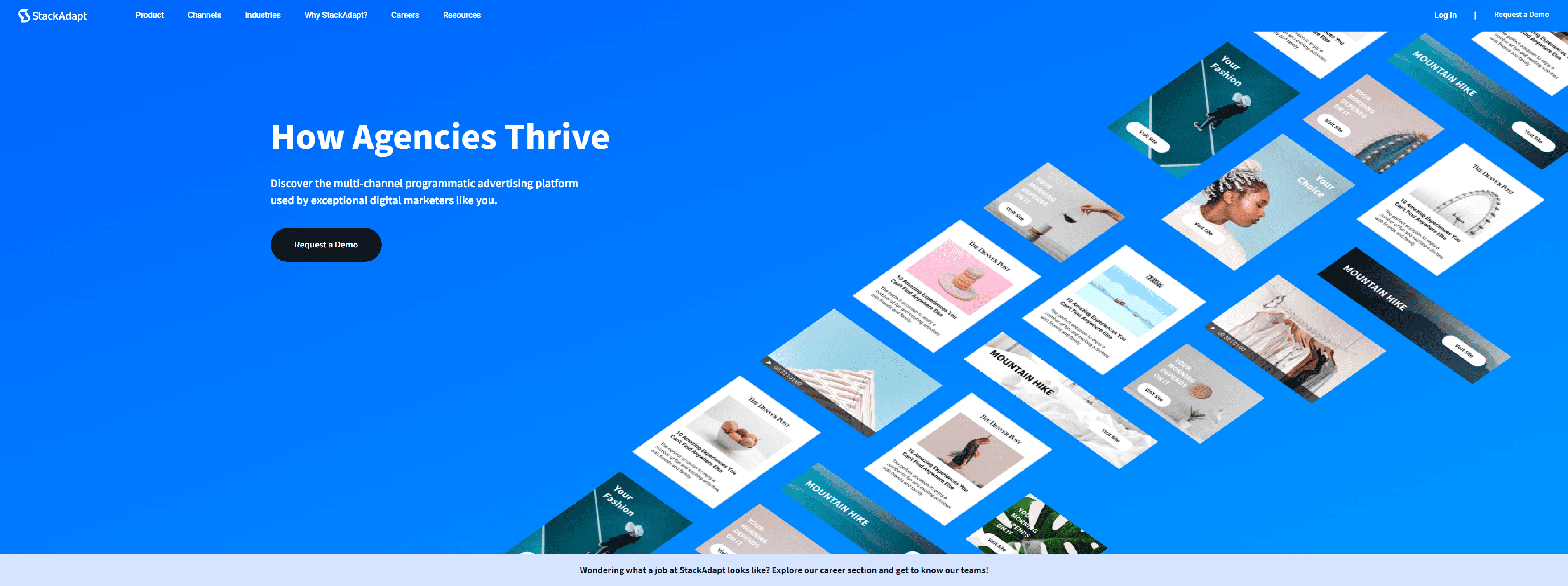
StackAdapt is a top-ranking programmatic advertising platform used by the most exceptional digital marketers.
- Creative Studio
- Planner
- Ad Previewer
- Multi-Channel Targeting
- Inventory and Marketplaces
- Strategy Tools
- Machine Learning and AI
- Robust Reporting
- Actionable Insights
BASIS

Basis Technologies improves the lives of digital marketers with the world’s most automated and comprehensive advertising platform.
- Integrate all advertising into one place
- Save time with workflow automation
- Increase collaboration and communication
- Operate smarter with consolidated data
- Build your team, on your time
MGID
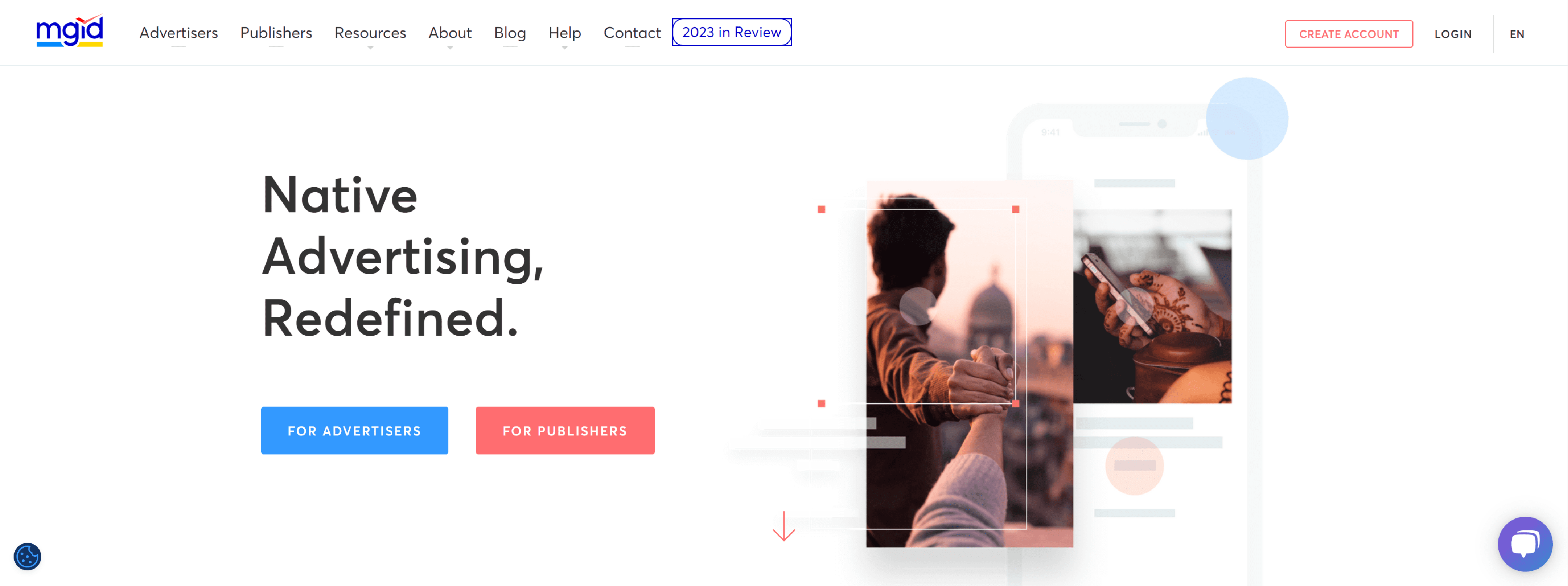
MGID vision is to nurture a new stage of digital media, enabling consumers to engage with content and sponsored advertisements in an equally positive way.
- Avoid banner blindness by serving relevant content, suitable to a user’s interests
- Organically intertwine advertisements into a user’s website interactions with native ad placements, free from irritation
- Utilize a more subtle and indirect selling approach, rather than standing out as purely hard-sales advertising
- By definition, native advertising has a 60% higher CTR
MEDIAMAXNETWORK
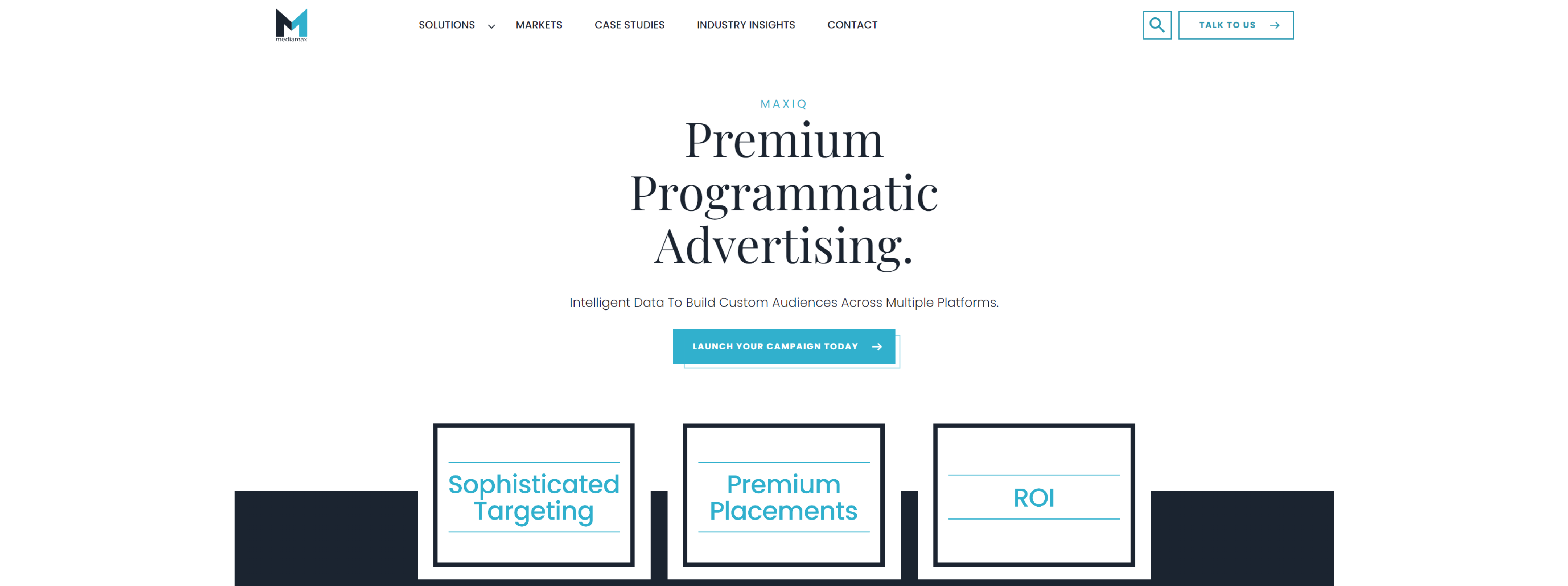
MediaMax’s luxury programmatic advertising places your ads in the right places for your exact target audience.
- Data in your CRM
- Social media platforms
- Subscription-based emails
- Surveys
- Customer feedback
PUBLIFT
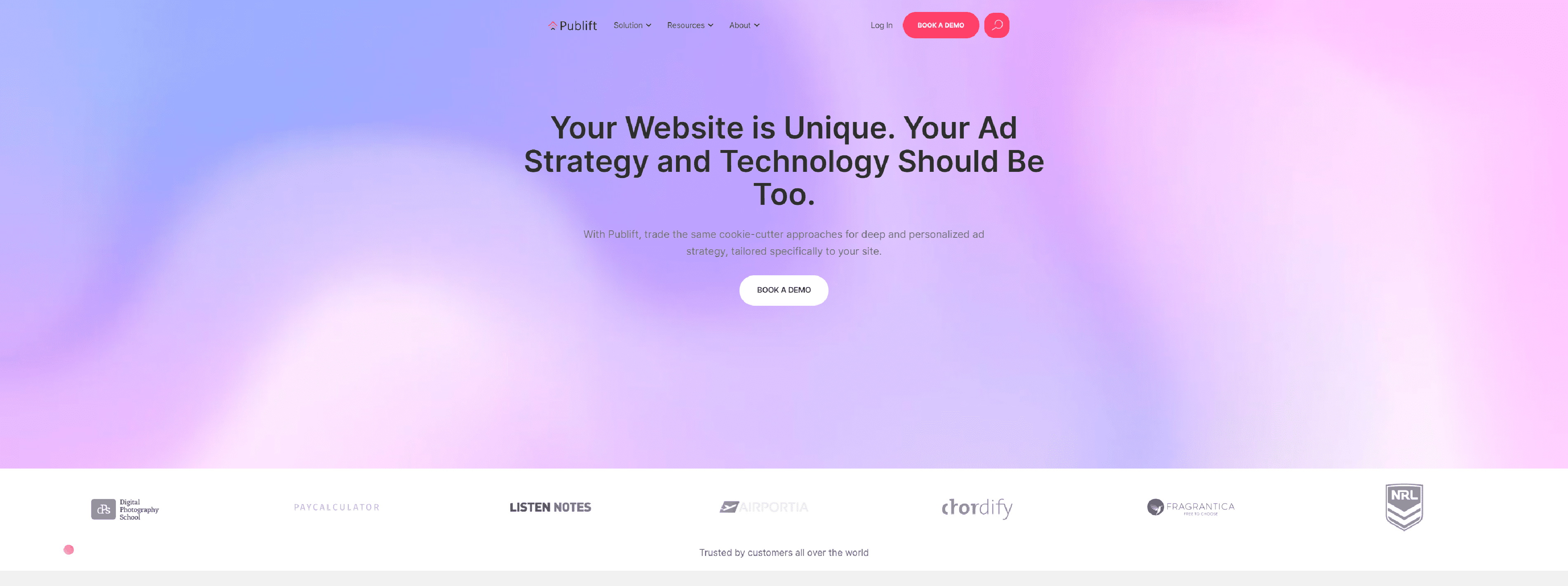
With Publift, trade the same cookie-cutter approaches for deep and personalized ad strategy, tailored specifically to your site.
- Optimization Excellence
- Highly Customizable
- Optimization Dojo
- Experiment Everything
- Deep Engineering Expertise
SMAATO
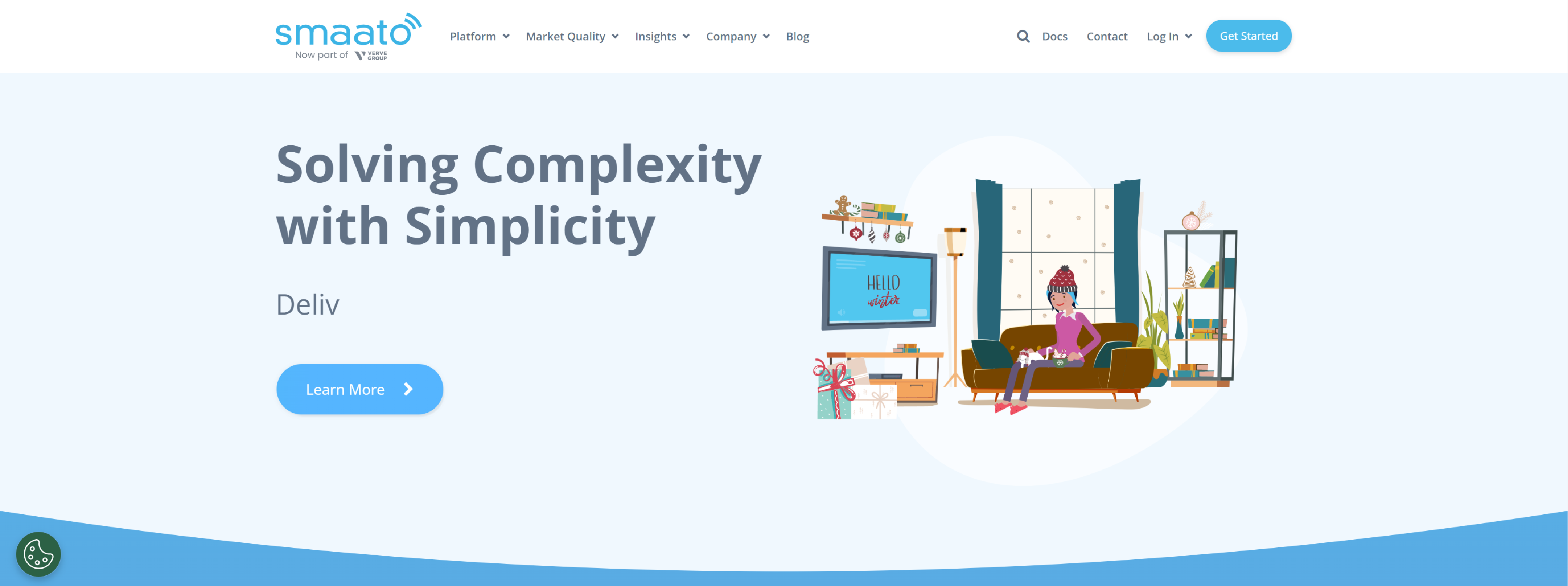
Smaato’s Digital Ad Tech Platform gives publishers the controls needed to deliver seamless, engaging experiences for global audiences.
- Build Your Own Walled Garden
- No Ad-Serving Fees
- We Are Omnichannel
- Our Clean, Protected Marketplace
CRITEO
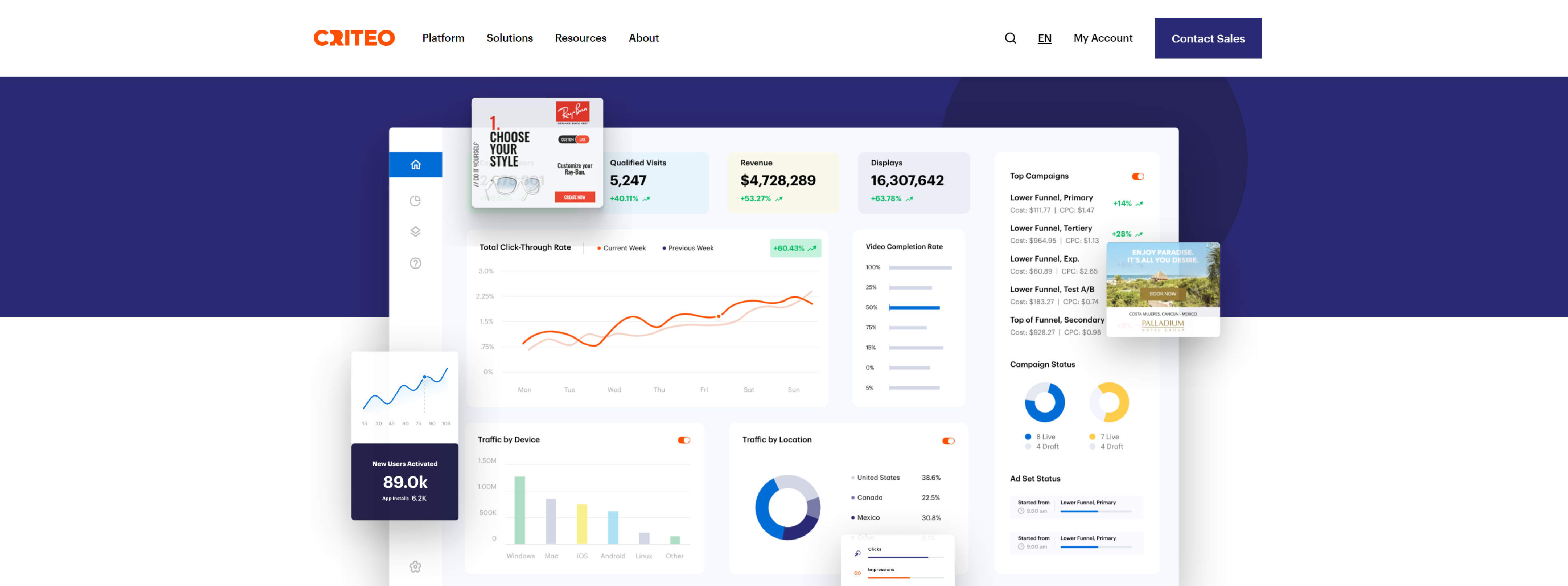
Activate the world’s largest set of commerce data to bring richer experiences to consumers with Criteo Commerce Media Platform.
- Industry-leading AI technology
- World’s largest open commerce dataset
- Inventory on leading retailers
- Premium open internet supply
- Unique commerce audiences
- Closed-loop measurement
- Outcomes-focused
- United supply and demand
- All-in-one solution
ADS.MICROSOFT
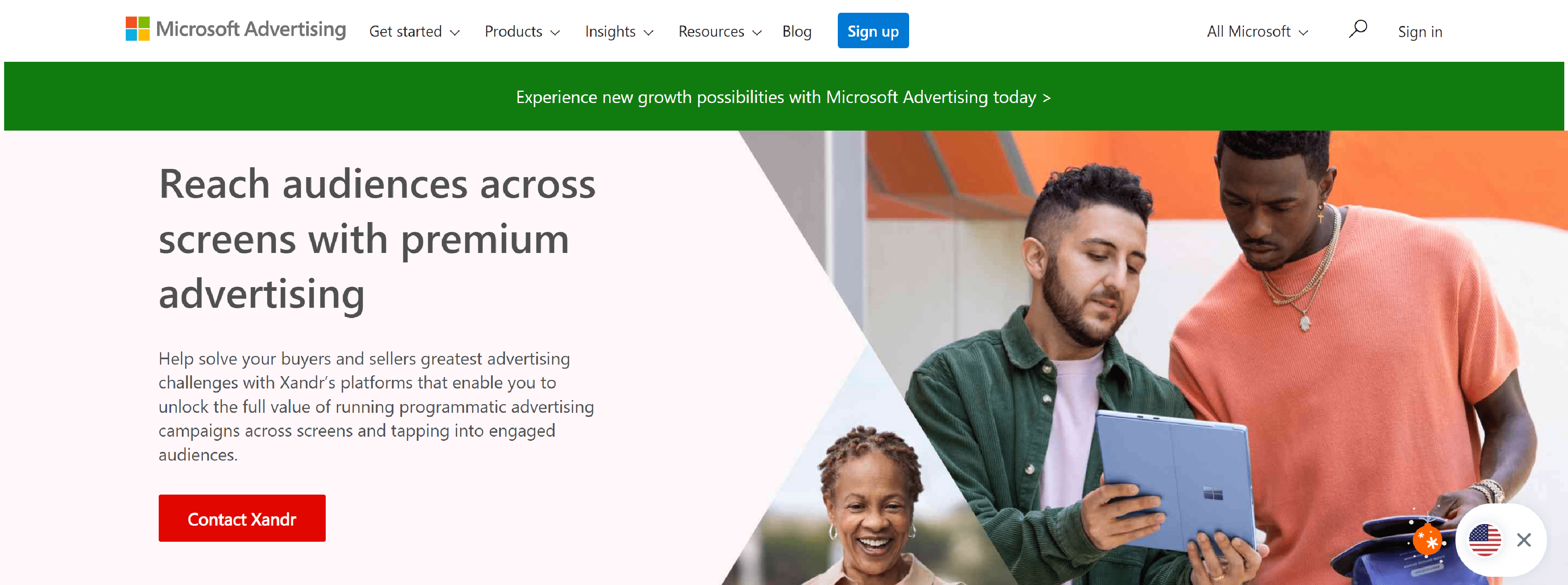
Microsoft Advertising – run scaled and sophisticated programmatic advertising campaigns with Xandr. Reach your target audience with one of the world’s largest marketplaces.
- Innovators in advertising technology
- Premium advertising for a variety of formats
- An open, flexible platform
ADMANAGER.GOOGLE
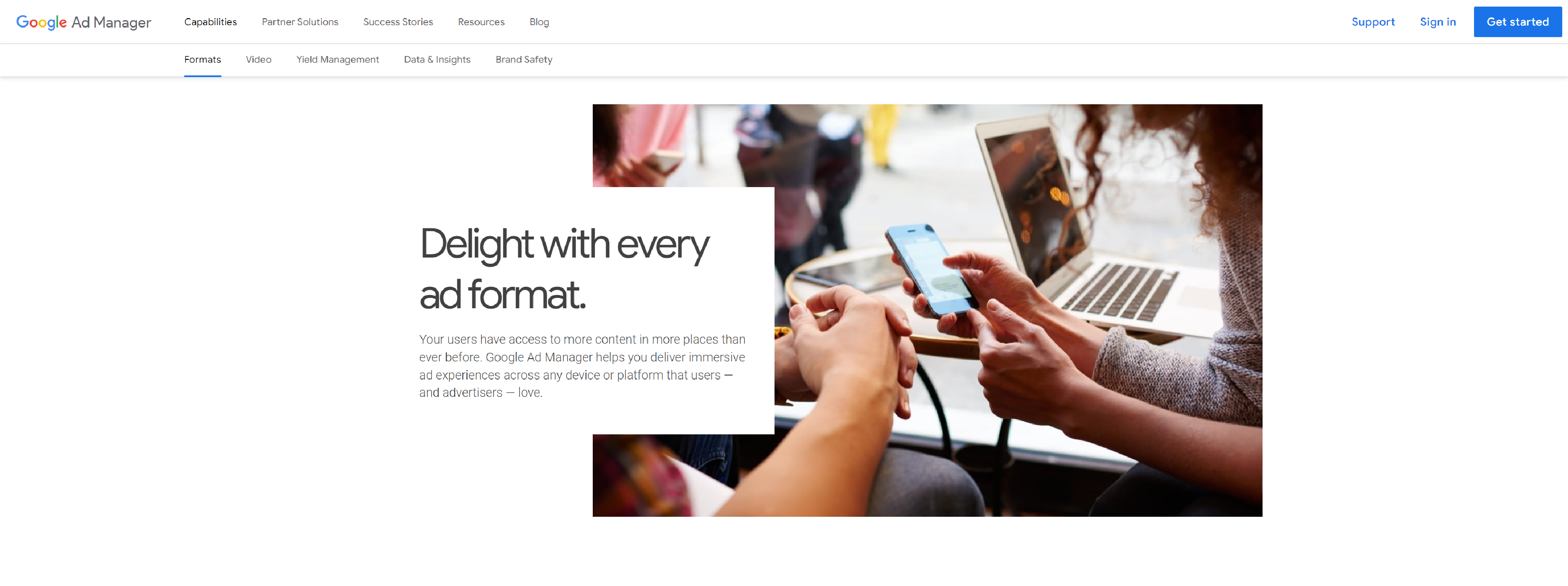
Google Ad Manager brings the scale and impact of data-driven, programmatic buying to every ad format with immersive ad experiences across any device or platform.
- Delight with every ad format
- Make every ad fit
- Sell any way you want
- Stay ahead of the curve
Buying and Selling: Auction Types for Programmatic Advertising
Programmatic advertising involves buying and selling ad inventory in real-time auctions through automated technology. There are three main auction types used in programmatic advertising:
- First-price auction: In a first-price auction, the highest bidder wins and pays the amount they bid. For example, if an advertiser bids $5 for an ad impression and there are no other bidders, they will win the impression and pay $5.
- Second-price auction: In a second-price auction, the highest bidder wins but pays the amount of the second-highest bid plus a small increment. For example, if an advertiser bids $5 for an ad impression and the second-highest bid is $4, they will win the impression but only pay $4.01.
- Header bidding: Header bidding is a newer auction type that allows publishers to offer their ad inventory to multiple demand-side platforms (DSPs) simultaneously before sending it to ad exchanges. This allows publishers to get the highest possible price for their inventory and gives advertisers more access to premium inventory.
Each auction type has its own advantages and disadvantages, and advertisers and publishers must choose the one that best suits their needs and goals.
Why Programmatic Advertising Is Important for Advertisers
Programmatic advertising is important for advertisers because it allows them to reach their target audience more efficiently and effectively. It uses data and technology to automate the buying and selling of digital ad inventory, making the process faster and more precise. Here are some reasons why programmatic advertising is important for advertisers:
- Targeted Advertising: Programmatic advertising allows advertisers to target specific audiences based on factors like demographics, interests, and behaviors. This ensures that ads are shown to the right people, at the right time, and in the right place.
- Cost-Effective: Programmatic advertising can be more cost-effective than traditional advertising because it eliminates the need for manual processes and reduces the risk of ad fraud. Advertisers can also set their own budgets and bid on ad inventory in real-time auctions, which can help them get the most value for their money.
- Real-Time Optimization: Programmatic advertising allows advertisers to optimize their campaigns in real-time based on performance data. This means they can adjust their targeting, messaging, and bidding strategies on the fly to improve campaign results.
- Increased Reach: Programmatic advertising gives advertisers access to a wider range of ad inventory across multiple channels, including display, video, mobile, social media, and more. This can help them reach more potential customers and increase brand awareness.
Why Programmatic Advertising Is Important for Publishers
Programmatic advertising is also important for publishers as it allows them to monetize their digital ad inventory more effectively. Programmatic advertising is a way for publishers to sell their ad inventory in an automated, data-driven way, without having to manually negotiate deals with advertisers.
- Increased Revenue: Programmatic advertising can help publishers increase their revenue by allowing them to sell their ad inventory at a higher price. This is because programmatic advertising uses data to target ads to specific audiences, which can be more valuable to advertisers.
- Streamlined Processes: Programmatic advertising streamlines the ad buying and selling process, making it faster and more efficient. This means that publishers can focus on creating content and growing their audience, rather than spending time negotiating ad deals.
- Access to More Advertisers: Programmatic advertising gives publishers access to a wider range of advertisers, including those who may not have been able to afford traditional advertising. This can help them diversify their revenue streams and reach new audiences.
- Real-Time Optimization: Programmatic advertising allows publishers to optimize their ad inventory in real-time based on performance data. This means they can adjust their ad pricing, formats, and targeting strategies to improve their results.
Programmatic Advertising Trends: What’s Next for programmatic advertising?
- Increased Use of Artificial Intelligence (AI): AI is being used to improve programmatic advertising by analyzing data to identify patterns and make predictions. AI can also be used to optimize campaigns in real-time, improving performance and ROI.
- More Focus on Brand Safety: Brand safety has become a major concern for advertisers, and programmatic advertising is no exception. Advertisers are looking for ways to ensure their ads are not displayed alongside inappropriate content, and programmatic platforms are responding by offering more robust brand safety measures.
- Greater Adoption of Connected TV (CTV): CTV is becoming an increasingly popular way for consumers to watch TV, and programmatic advertising is following suit. Advertisers are investing more in CTV advertising, and programmatic platforms are developing new ways to target audiences on this platform.
- Growing Importance of Data Privacy: Data privacy has become a major concern for consumers, and regulations like GDPR and CCPA are forcing advertisers to be more transparent about how they collect and use data. Programmatic platforms are responding by offering more options for consumers to control their data and by providing more transparency into how data is being used.
Q: What is programmatic advertising?
A: Programmatic advertising is a method of buying and selling advertising space in an automated and data-driven manner. It uses algorithms and technology to target specific audiences and optimize ad placements in real-time.
Q: How does programmatic advertising work?
A: Programmatic advertising involves the use of a demand-side platform (DSP) that allows advertisers to bid on available ad inventory. The DSP automates the process of buying ad impressions by analyzing user data and targeting parameters, then bidding for and delivering the most relevant ads in real-time.
Q: What are the benefits of programmatic advertising?
A: Programmatic advertising offers several benefits, such as:
- Targeted advertising: It enables advertisers to reach specific audiences based on demographics, behavior, interests, and more.
- Real-time optimization: Ads can be adjusted and optimized in real-time based on performance data, ensuring maximum effectiveness.
- Efficiency and cost-effectiveness: Programmatic buying eliminates the need for manual negotiations, saving time and resources while maximizing ROI.
- Data-driven decision making: Advertisers have access to comprehensive data and insights, allowing them to make informed decisions and improve campaign performance.
Q: What are some common programmatic advertising formats?
A: Programmatic advertising encompasses various formats, including display ads (banners, pop-ups, etc.), mobile ads, video ads, native ads, and audio ads. These formats can be delivered across websites, mobile apps, social media platforms, and other digital channels.
Q: How do advertisers target specific audiences in programmatic advertising?
A: Advertisers can leverage data to target specific audiences in programmatic advertising. This data includes demographic information, browsing behavior, location, device type, and more. Audience segments can be created to target specific groups of users, ensuring ads are shown to the right people at the right time.
Q: What is real-time bidding (RTB) in programmatic advertising?
A: Real-time bidding (RTB) is the process of buying and selling ad impressions in real-time auctions. Advertisers bid on available impressions through a programmatic auction, and the highest bidder’s ad gets displayed on the user’s screen. The bidding occurs in milliseconds, allowing for dynamic optimization and personalized ad delivery.
Q: Are there any potential challenges or risks with programmatic advertising?
A: Some potential challenges of programmatic advertising include issues with ad fraud, brand safety concerns, lack of transparency in the supply chain, and the potential for ad viewability issues. Advertisers need to carefully monitor campaigns and work with trusted partners to mitigate these risks.